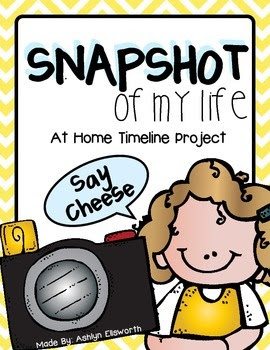There are so many great teaching themes to use during the month of December. One of my favorites to do every year is a gingerbread theme! There are some really wonderful read aloud books that can be used in a variety of ways in all subject areas.
One story I read to my students every year is Gingerbread Baby by Jan Brett. In this twist on the original tale, the gingerbread baby runs away and is lured back to the house when the boy who created him traps him by creating a gingerbread house.

For a fun activity, read the story to your students and, once the story ends, tell your students that you brought them some gingerbread cookies to eat. Then, grab a fancy Christmas bag, bring it over to your kids, and look inside. Newsflash: There's nothing inside! Then play it up BIG TIME: Looking inside the bag, looking confused, looking under your chair, around the classroom... and tell your students that, shockingly, the cookies are no longer in the bag! They always gasp and offer their suggestions on what happened to the gingerbread men. Of course, eventually, at least one student predicts that they must have run away! To relate it to the story, ask your students to recall how the boy got the gingerbread man to come back at the end of the book. The boy creates a fancy gingerbread house in order to entice the gingerbread cookie to come back; so your students will do the same thing to try and get their own cookies to return.
Give each student a gingerbread house traced onto construction paper with an open door cut into it. You can have them decorate it with any supplies you wish, but I usually take the quick route and just have them decorate it by coloring, cutting out, and gluing pictures of candy to the front of the house. I then glue it to a piece of red construction paper to add a little more stability.
I always plan this activity right before my students are about to leave the classroom, such as during specials or lunch time. This way, it gives me an opportunity to leave a gingerbread cookie on each of their houses when they least expect it!
Then your students will return to a surprise - a gingerbread man in the door! It always warms my heart when they come back in and exclaim, "It really worked!!!".
I also love to integrate the theme into our centers as well, such as with this Bakin' Up Sight Words activity from my
Deck the Halls {Math and Literacy Centers} pack. Students choose a cookie and write the sight word on the matching space in the recording sheet.
A gingerbread theme is also a great little way to teach adjectives and descriptive writing. I picked up a foam sticker gingerbread decorating kit from Michael's (they have 24 to a pack!) that came with foam gingerbread men and all the components to decorate the front of it. Each student decorated their own.
Then, each student described their gingerbread man by creating a tree map to organize their thinking.
...Which they then used to write a story to describe their gingerbread creation. The tree map really helped them create coherent compound sentences and their writing turned out wonderful!
We always culminate our gingerbread unit with a big class gingerbread house building party. The day before the party, we have little elves (aka parent helpers) come in and build real houses out of graham crackers and royal icing. No milk cartons here! Then, the next day, each student gets to decorate their own gingerbread house. They absolutely love it!
What is your favorite gingerbread story to read during the month of December? Leave a comment telling us which one you love reading to your students and why!





















































